Data Labeling Market Size
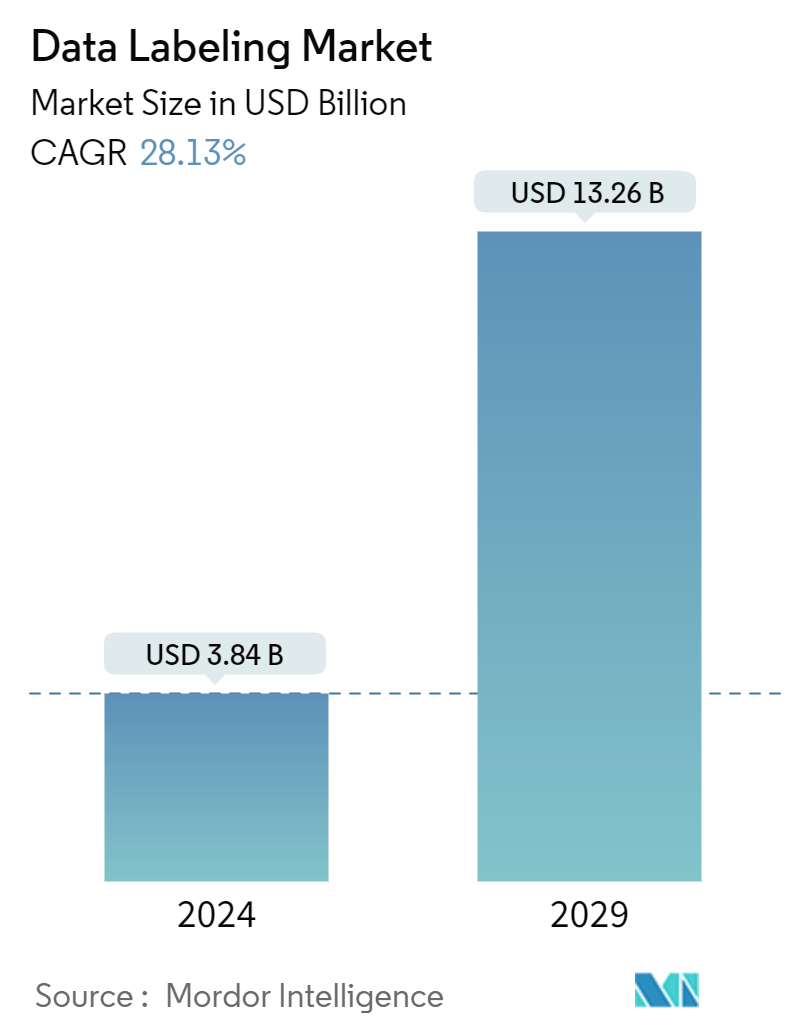
| Study Period | 2019 - 2029 |
| Market Size (2024) | USD 3.84 Billion |
| Market Size (2029) | USD 13.26 Billion |
| CAGR (2024 - 2029) | 28.13 % |
| Fastest Growing Market | Asia Pacific |
| Largest Market | North America |
| Market Concentration | Low |
Major Players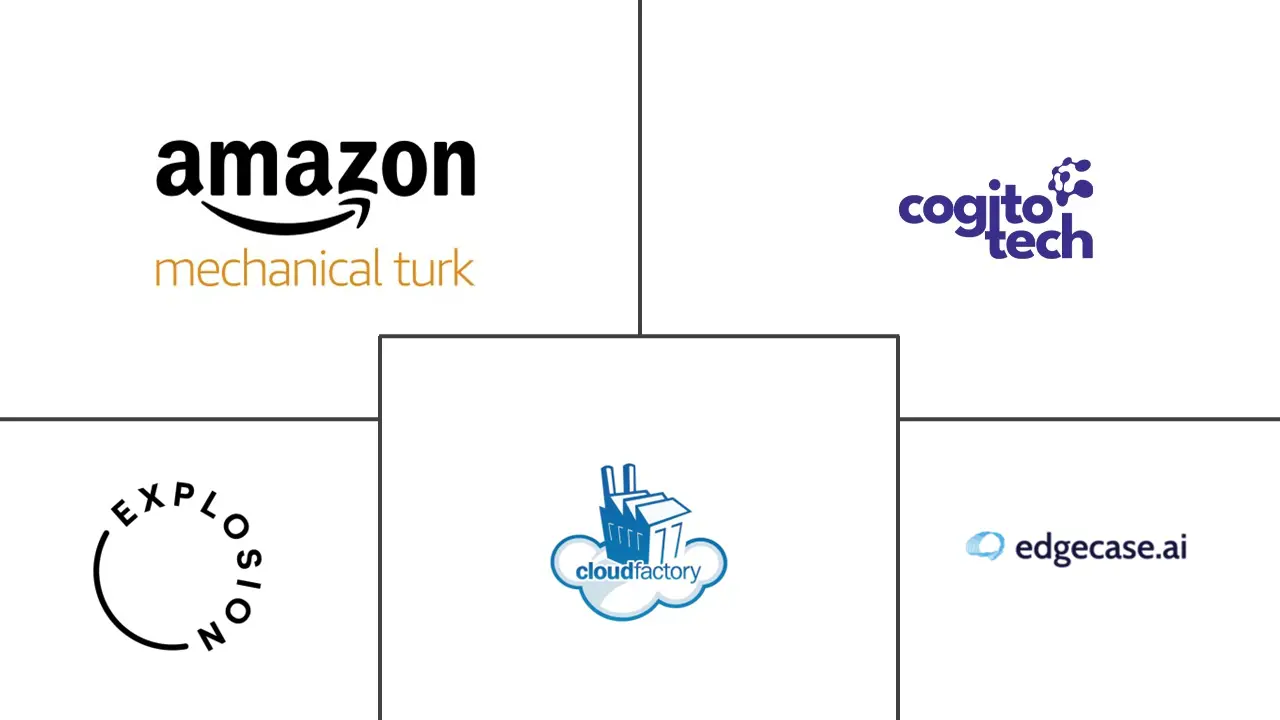
*Disclaimer: Major Players sorted in no particular order |
Data Labeling Market Analysis
The Data Labeling Market size is estimated at USD 3.84 billion in 2024, and is expected to reach USD 13.26 billion by 2029, at a CAGR of 28.13% during the forecast period (2024-2029).
- The data labeling market is experiencing significant growth, driven by the increasing demand for high-quality labeled data across various sectors. As businesses adopt AI and machine learning technologies, the need for large volumes of labeled data is rising. This growing demand, particularly in sectors such as healthcare, automotive, and industrial, is creating numerous market opportunities.
- Companies are increasingly leveraging automated data labeling tools that use machine learning algorithms to assist or expedite the labeling process, thereby reducing time and labor costs. Combining human labelers with automated systems ensures high accuracy and efficiency, allowing for rapid processing of large datasets.
- The growth of real-time data processing, especially in applications like autonomous driving and real-time analytics, is driving demand for real-time data labeling solutions. Autonomous vehicles operate in complex, dynamic environments that include varying traffic conditions, weather, and unexpected obstacles. Real-time labeling allows for immediate analysis and understanding of these conditions, helping the vehicle make informed decisions.
- Organizations have announced initiatives to promote ethical data labeling practices, addressing concerns over bias and fairness in AI models. These initiatives include transparent labeling processes and community engagement to ensure diverse perspectives.
- Crowdsourcing has gained significant traction. Organizations are leveraging a diverse pool of contributors, allowing for the rapid labeling of extensive datasets without sacrificing quality. This method accelerates processes and introduces a range of perspectives. Additionally, there's a noticeable trend towards specialized labeling services. Sectors such as healthcare and finance demand bespoke solutions that cater to their unique requirements and adhere to regulatory standards.
- Data privacy is becoming increasingly paramount in data labeling. With the evolution of AI systems, regulatory frameworks governing personal information have also intensified. Organizations find themselves navigating intricate laws such as GDPR and CCPA. These regulations outline the protocols for data collection, labeling, and usage. Failing to comply can result in substantial fines and damage to reputation.
- Due to economic pressures, companies are increasingly investing in automated data labeling solutions to reduce long-term costs. This approach enhances efficiency but may also decrease the demand for traditional human labeling services. Startups and smaller firms in the data labeling sector may struggle to secure funding during economic downturns, limiting their ability to invest in growth and innovation.
Data Labeling Market Trends
Healthcare is Expected to Witness Remarkable Growth
- Data labeling has become paramount as the healthcare industry increasingly embraces artificial intelligence (AI) and machine learning (ML) technologies. With precise data labeling, AI models can be developed to boost diagnostic accuracy, tailor treatment plans, and ultimately enhance patient outcomes.
- Medical images labeled from modalities, including X-rays, MRIs, and CT scans, play a pivotal role in training AI algorithms for abnormality detection. For example, AI can pinpoint tumors or fractures with precision, closely resembling the expertise of seasoned radiologists. Furthermore, when trained on labeled data, AI models can scrutinize microscopic images, enabling earlier disease detection, such as cancer, and thereby enhancing prognoses. According to the World Health Organisation, the number of new cancer cases will increase to around 35.3 million cases in the year 2050 from 19.9 million in 2022. With such an increasing number of new cancer cases, the demand for AI models is expected to grow, directly impacting market growth.
- As healthcare generates vast amounts of structured and unstructured data, there is a growing need for specialized data labeling services that can manage this complexity effectively. Data labeling plays a crucial role in analyzing extensive datasets tied to drug interactions and biological responses, thereby expediting the drug development process through more efficient identification of potential targets.
- The growing iinvestmentin drug discovery further drives the market growth. For instance, in March 2024, NVIDIA launched more than two dozen new microservices, empowering healthcare enterprises globally to harness the latest advancements in generative AI from any location and on any cloud platform. This new suite of NVIDIA healthcare microservices integrates optimized NVIDIA NIM AI models and workflows paired with industry-standard APIs (application programming interfaces). These serve as foundational elements for crafting and deploying cloud-native applications. The offerings encompass advanced imaging, natural language and speech recognition, and digital biology generation, prediction, and simulation. NVIDIA Healthcare Unveils Generative AI Microservices to Propel Drug Discovery, MedTech, and Digital Health
- Stringent regulations, such as HIPAA, oversee patient data privacy. This has intensified the focus on ensuring data labeling processes not only comply with legal standards but also uphold security protocols. With technological advancements and a rising demand for AI-driven solutions, the significance of precise and efficient data labeling is set to amplify. Organizations prioritizing high-quality data labeling services will be poised to fully leverage their healthcare data, paving the way for enhanced patient care outcomes.
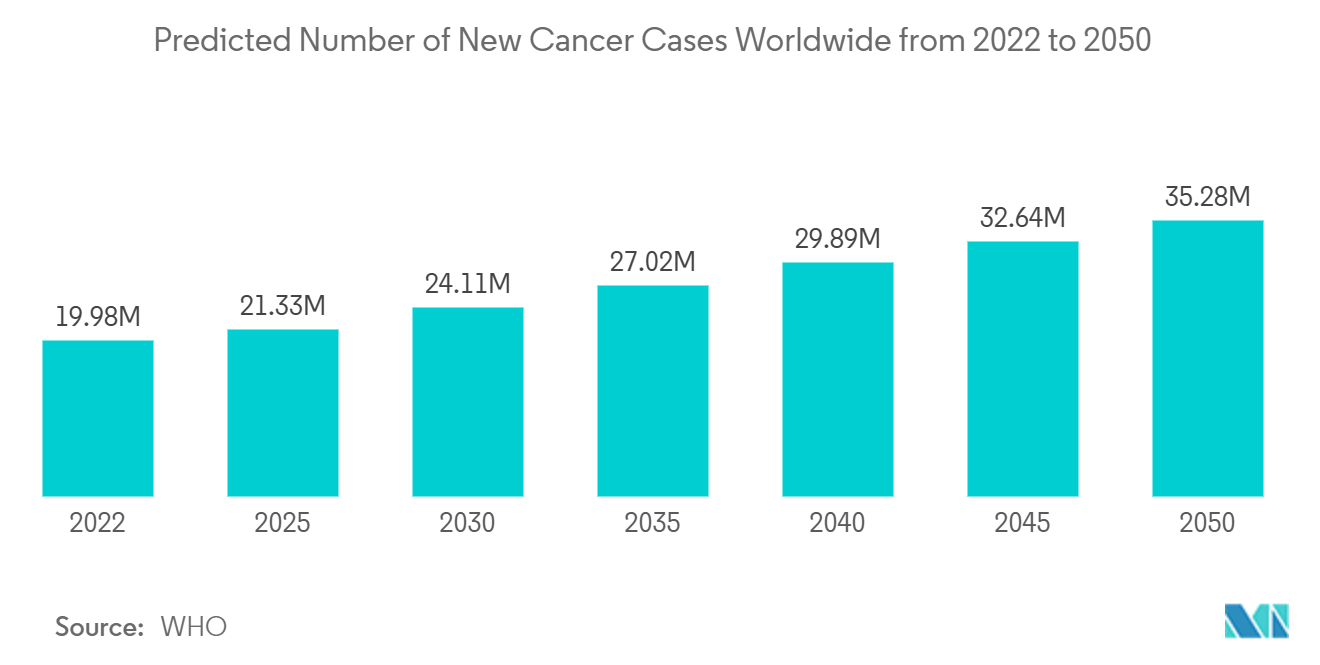
North America Holds Significant Market Share
- The rapid adoption of AI and machine learning (ML) technologies across various industries is increasing in the United States. The need for accurately labeled data is essential for effectively training these systems. Additionally, there is a growing trend toward utilizing automated tools and crowdsourcing platforms to enhance the efficiency of data labeling processes, thereby reducing the costs and time associated with manual labeling.
- As IoT devices, social media, and e-commerce platforms generate vast amounts of data, the need for effective data labeling solutions has surged in the region. Organizations aiming to manage and analyze this influx efficiently are driving a growing demand for accurate data labeling services.
- Regions like Silicon Valley and Detroit are witnessing significant investments in autonomous vehicle technology, underscoring the industry's reliance on vast amounts of labeled data to train AI models to interpret driving environments. For instance, in October 2024, Waymo, Alphabet's driverless vehicle division, successfully wrapped up a USD 5.6 billion funding round, aiming to broaden its robotaxi services throughout the U.S. Waymo manages a fleet of close to 800 self-driving vehicles in California, with an even larger presence in Phoenix, USA.
- In parallel, the growing adoption of drones and robotics across diverse applications fuels the demand for real-time labeled data, essential for navigation and enhancing operational efficiency. As reported by the International Federation of Robotics, the United States manufacturing firms are increasingly turning to automation, with industrial robot installations surging by 12% to hit 44,303 units in 2023. Robots utilize machine learning models to identify and classify objects within their environment. To train these models, labeled datasets are crucial, enabling robots to recognize items, navigate obstacles, and engage with their surroundings.
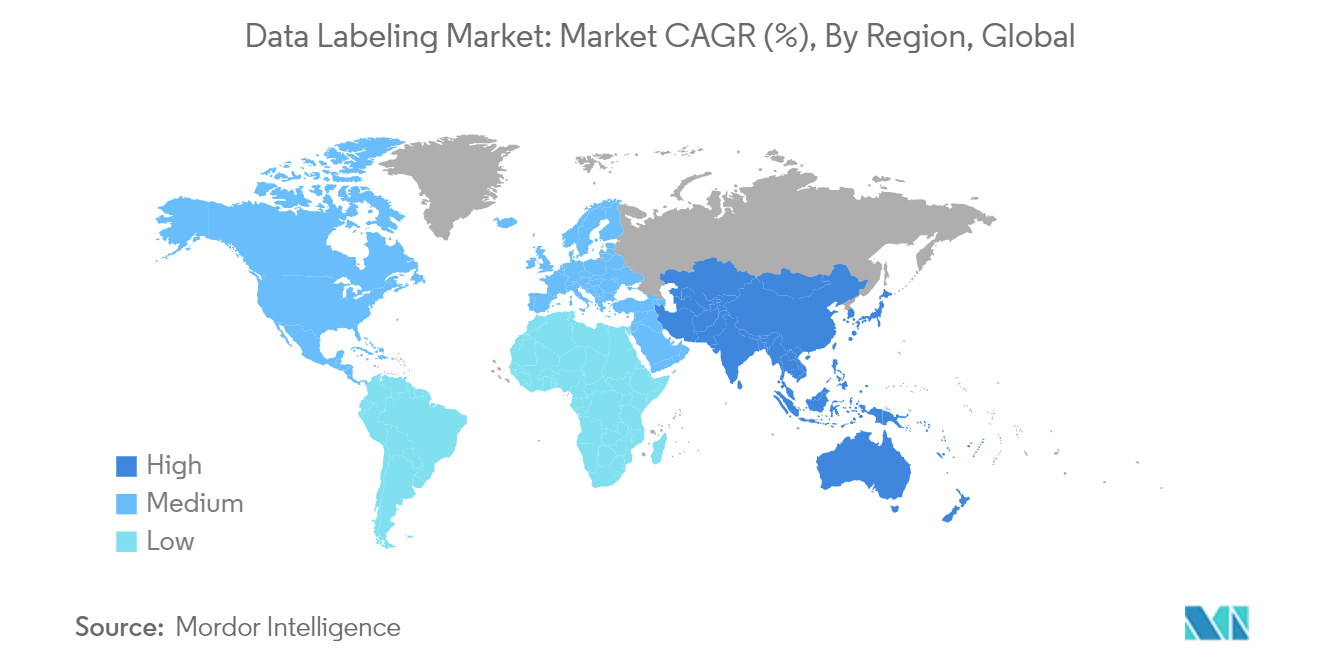
Data Labeling Industry Overview
The data labeling market is highly fragmented, with global and local conglomerates and specialized players operating across various segments. While several large multinational companies dominate specific high-value segments, numerous regional and niche players contribute to the overall competition, making the market highly diverse. This fragmentation is driven by the demand for data labeling across a wide range of end-user verticals, allowing both large and small companies to coexist and thrive in the market.
Leading companies in the data labeling market include Amazon Mechanical Turk, Inc., Cogito Tech LLC, Deep Systems, LLC, CloudFactory Limited, Explosion AI GmbH, CloudApp, Alegion, Heex Technologies, Clickworker GmbH, Appen Limited, edgecase.ai, and Labelbox, Inc. These companies have established strong brand recognition and extensive global operations, enabling them to command significant market share. Their strengths lie in innovation, broad product portfolios, and strong distribution networks. These leaders often engage in strategic acquisitions and partnerships to maintain their competitive edge and expand their market reach.
To succeed in the data labeling market, companies are prioritizing research and development, as demand from major industries such as IT, healthcare, industrial, automotive, financial services, and others is accelerating. In recent years, significant technological advancements have transformed the data labeling market. Companies that invest in emerging markets and adapt their offerings to regional needs are likely to gain a competitive advantage in this fragmented market.
Data Labeling Market Leaders
-
Amazon Mechanical Turk, Inc.
-
Cogito Tech LLC
-
CloudFactory Limited
-
Explosion AI GmbH
-
edgecase.ai
*Disclaimer: Major Players sorted in no particular order
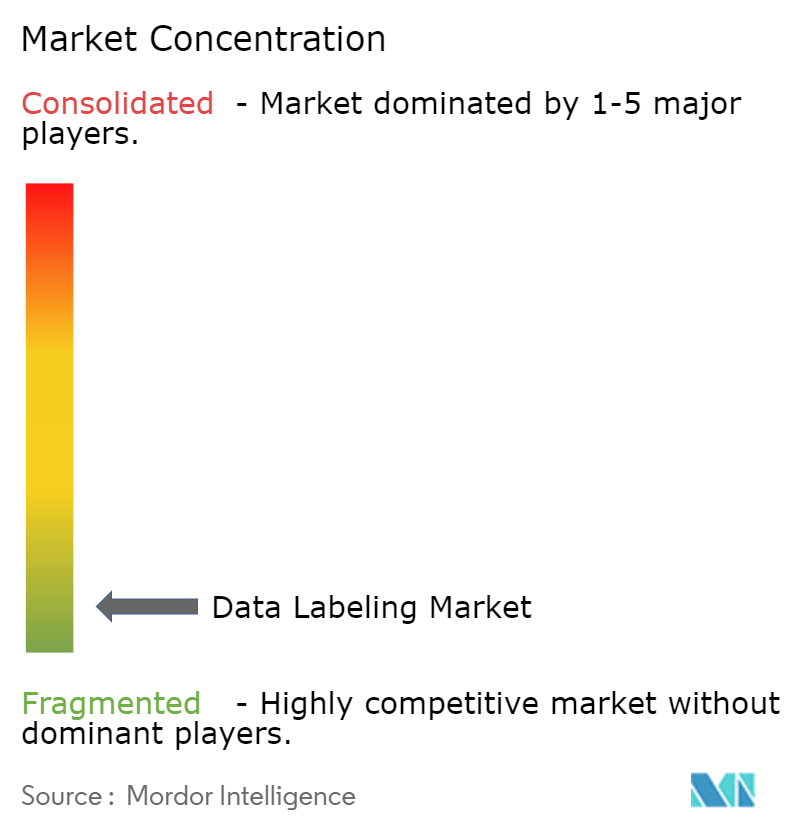
Data Labeling Market News
- September 2024: The National Geospatial-Intelligence Agency (NGA) is poised to invest heavily in artificial intelligence, earmarking up to USD 700 million for data labeling services over the next five years. This initiative aims to enhance NGA's machine-learning capabilities, particularly in analyzing satellite imagery and other geospatial data. The agency has opted for a multi-vendor indefinite-delivery/indefinite-quantity (IDIQ) contract, emphasizing the importance of annotating raw data be it images or videos—to render it understandable for machine learning models. For instance, when dealing with satellite imagery, the focus could be on labeling distinct entities such as buildings, roads, or patches of vegetation.
- October 2023: Refuel.ai unveiled a new platform, Refuel Cloud, and a specialized large language model (LLM) for data labeling. Refuel Cloud harnesses advanced LLMs, including its proprietary model, to automate data cleaning, labeling, and enrichment at scale, catering to diverse industry use cases. Recognizing that clean data underpins modern AI and data-centric software, Refuel Cloud addresses the historical challenge of human labor bottlenecks in data production. With Refuel Cloud, enterprises can swiftly generate the expansive, precise datasets they require in mere minutes, a task that traditionally spanned weeks.
Data Labeling Market Report - Table of Contents
1. INTRODUCTION
1.1 Study Assumptions and Market Definition
1.2 Scope of the Study
2. RESEARCH METHODOLOGY
3. EXECUTIVE SUMMARY
4. MARKET INSIGHTS
4.1 Market Overview
4.2 Industry Attractiveness - Porter's Five Forces Analysis
4.2.1 Threat of New Entrants
4.2.2 Bargaining Power of Buyers/Consumers
4.2.3 Bargaining Power of Suppliers
4.2.4 Threat of Substitute Products
4.2.5 Intensity of Competitive Rivalry
4.3 Impact of COVID-19 Aftereffects and Other Macroeconomic Factors on the Market
5. MARKET DYNAMICS
5.1 Market Drivers
5.1.1 Rising Penetration of Connected Cars and Advances in Autonomous Driving Technology
5.1.2 Advances in Big Data Analytics based on AI and ML
5.2 Market Restraints
5.2.1 Lack of Skilled Workes and Data Security Concerns
6. MARKET SEGMENTATION
6.1 By Sourcing Type
6.1.1 In-house
6.1.2 Outsourced
6.2 By Type
6.2.1 Text
6.2.2 Image
6.2.3 Audio
6.3 By Labeling Type
6.3.1 Manual
6.3.2 Automatic
6.3.3 Semi-supervised
6.4 By End-user Industry
6.4.1 Healthcare
6.4.2 Automotive
6.4.3 Industrial
6.4.4 IT
6.4.5 Financial Services
6.4.6 Retail
6.4.7 Others
6.5 By Geography***
6.5.1 North America
6.5.2 Europe
6.5.3 Asia
6.5.4 Australia and New Zealand
6.5.5 Middle East and Africa
6.5.6 Latin America
7. COMPETITIVE LANDSCAPE
7.1 Company Profiles
7.1.1 Amazon Mechanical Turk, Inc.
7.1.2 Cogito Tech LLC
7.1.3 Deep Systems, LLC
7.1.4 CloudFactory Limited
7.1.5 Explosion AI GmbH
7.1.6 Alegion
7.1.7 Heex Technologies
7.1.8 Clickworker GmbH
7.1.9 Appen Limited
7.1.10 edgecase.ai
7.1.11 Labelbox, Inc
- *List Not Exhaustive
8. INVESTMENT ANALYSIS
9. FUTURE OUTLOOK OF THE MARKET
Data Labeling Industry Segmentation
Data labeling entails identifying raw data such as images, text files, or audio and assigning one or more meaningful labels. This process provides context, enabling machine learning models to learn from the data effectively.
The study tracks the revenue accrued through the sale of data labeling systems by various players across the globe. The study also tracks the key market parameters, underlying growth influencers, and major vendors operating in the industry, which supports the market estimations and growth rates over the forecast period. The study further analyses the overall impact of COVID-19 aftereffects and other macroeconomic factors on the market. The report’s scope encompasses market sizing and forecasts for the various market segments.
The data labeling market is segmented by sourcing type (in-house and outsourced), type (text, image, and audio), labeling type (manual, automatic, and semi-supervised), and end-user industry (healthcare, automotive, industrial, IT, financial services, retail, others), and geography (North America, Europe, Asia Pacific, Middle East & Africa, Latin America). The market sizes and forecasts regarding value (USD) for all the above segments are provided.
| By Sourcing Type | |
| In-house | |
| Outsourced |
| By Type | |
| Text | |
| Image | |
| Audio |
| By Labeling Type | |
| Manual | |
| Automatic | |
| Semi-supervised |
| By End-user Industry | |
| Healthcare | |
| Automotive | |
| Industrial | |
| IT | |
| Financial Services | |
| Retail | |
| Others |
| By Geography*** | |
| North America | |
| Europe | |
| Asia | |
| Australia and New Zealand | |
| Middle East and Africa | |
| Latin America |
Data Labeling Market Research FAQs
How big is the Data Labeling Market?
The Data Labeling Market size is expected to reach USD 3.84 billion in 2024 and grow at a CAGR of 28.13% to reach USD 13.26 billion by 2029.
What is the current Data Labeling Market size?
In 2024, the Data Labeling Market size is expected to reach USD 3.84 billion.
Who are the key players in Data Labeling Market?
Amazon Mechanical Turk, Inc., Cogito Tech LLC, CloudFactory Limited, Explosion AI GmbH and edgecase.ai are the major companies operating in the Data Labeling Market.
Which is the fastest growing region in Data Labeling Market?
Asia Pacific is estimated to grow at the highest CAGR over the forecast period (2024-2029).
Which region has the biggest share in Data Labeling Market?
In 2024, the North America accounts for the largest market share in Data Labeling Market.
What years does this Data Labeling Market cover, and what was the market size in 2023?
In 2023, the Data Labeling Market size was estimated at USD 2.76 billion. The report covers the Data Labeling Market historical market size for years: 2019, 2020, 2021, 2022 and 2023. The report also forecasts the Data Labeling Market size for years: 2024, 2025, 2026, 2027, 2028 and 2029.
Data Labeling Industry Report
Statistics for the 2024 Data Labeling market share, size and revenue growth rate, created by Mordor Intelligence™ Industry Reports. Data Labeling analysis includes a market forecast outlook for 2024 to 2029 and historical overview. Get a sample of this industry analysis as a free report PDF download.



